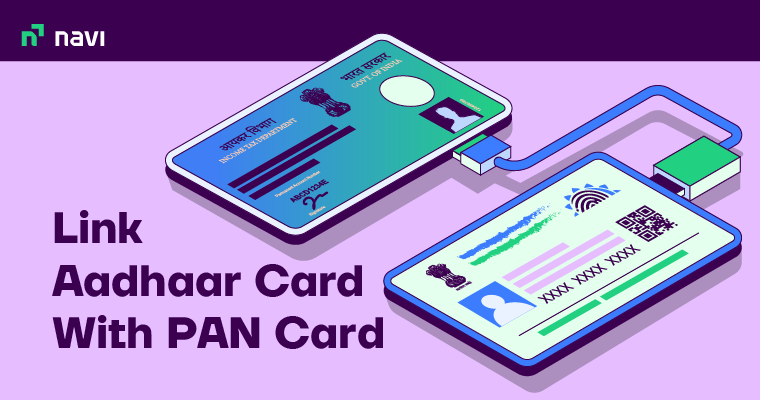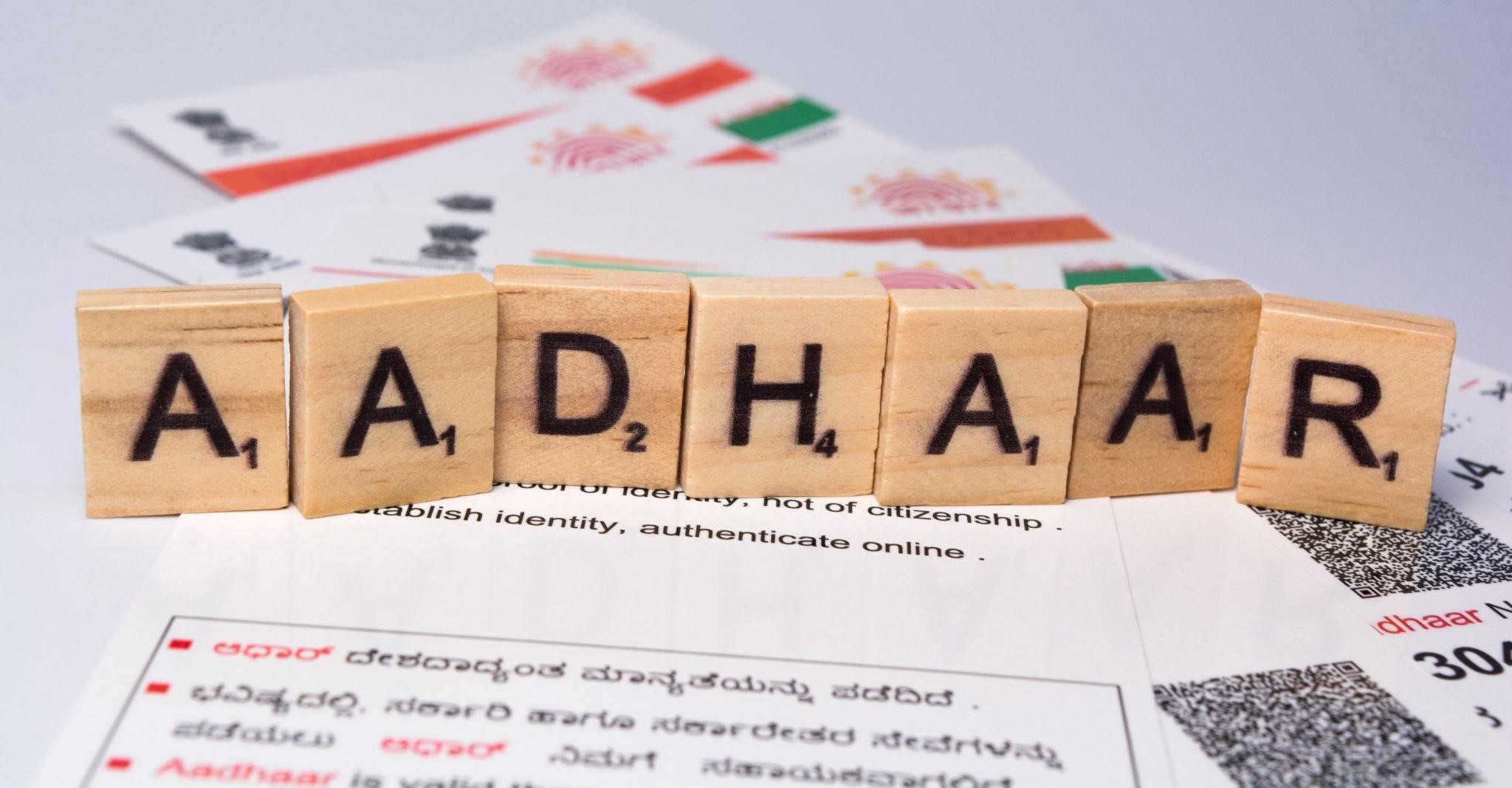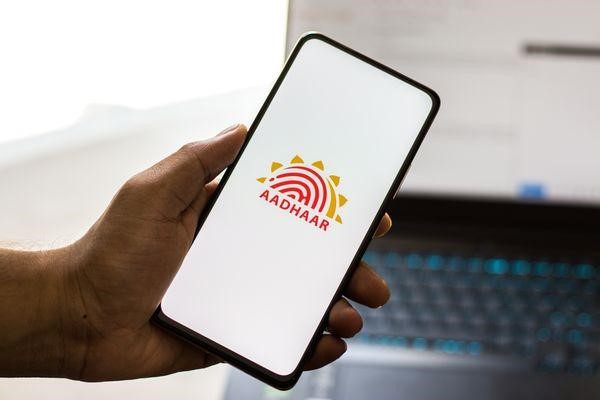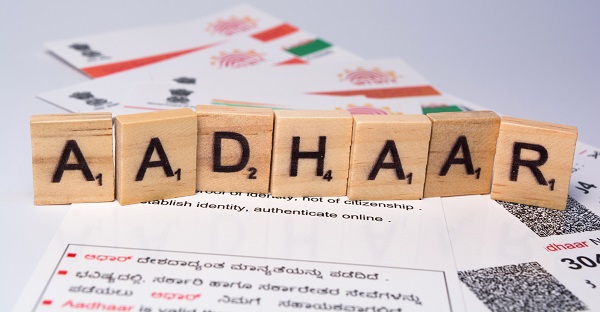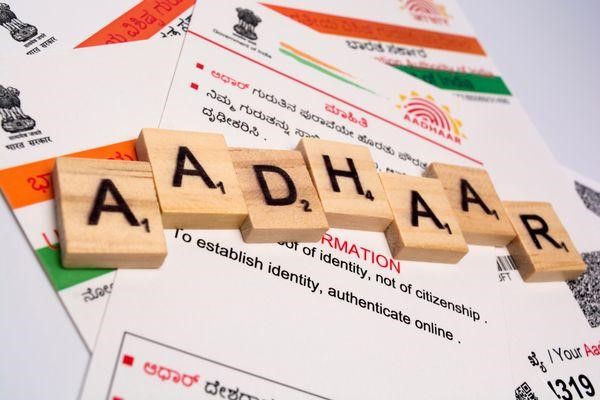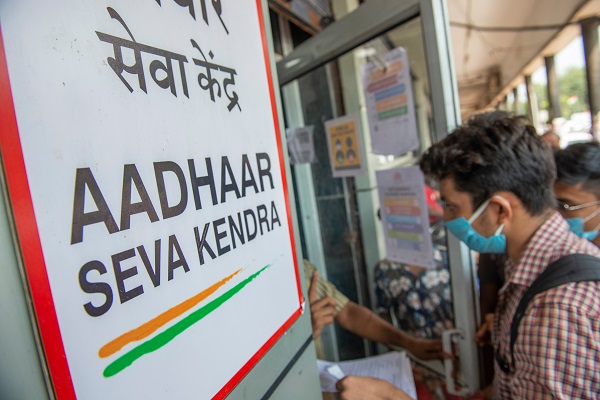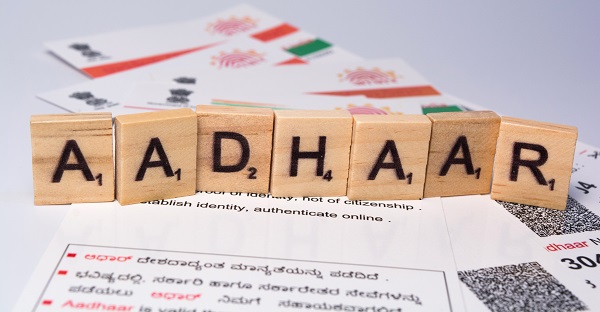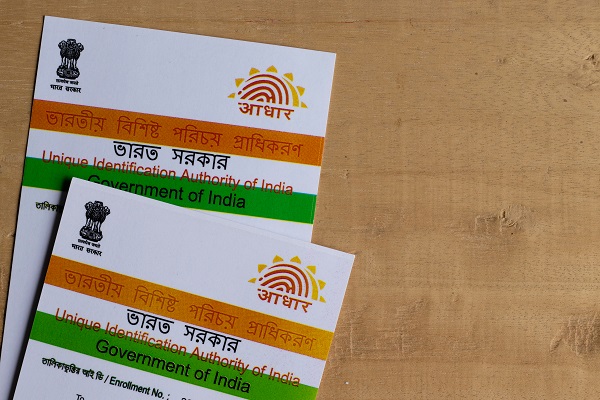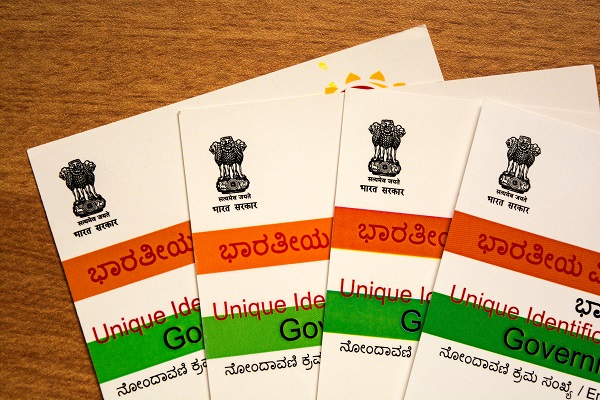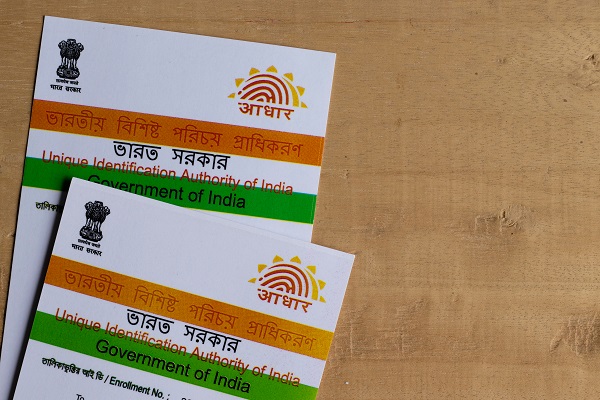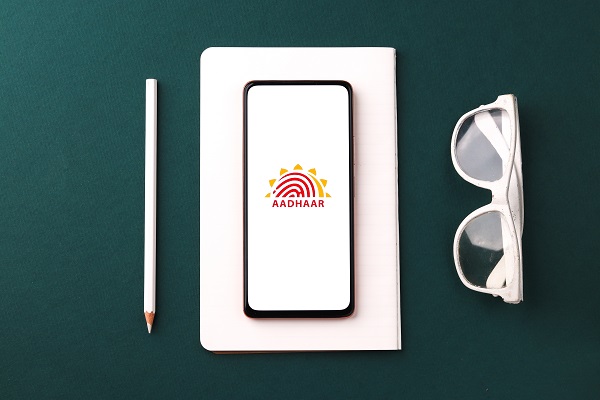How to Apply for a ₹1,000 Loan on your Aadhaar Card?
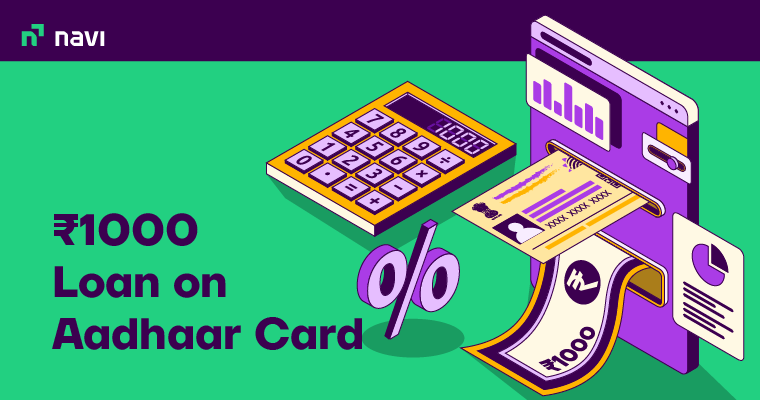
Aadhaar Card is an ID card issued by the Government of India to its citizens with a unique identification number issued by UIDAI (Unique Identification Authority of India). The Aadhaar Card has become an essential document for availing services, such as government subsidy, passport application, filing for income tax, banking services, etc. It is one of the primary documents sought by banks and financial institutions for personal loan approval. While the Aadhaar card has made the loan application and approval process a lot more convenient and efficient, can one get a ₹1,000 loan on an Aadhaar card?
The simple answer is yes! You can get a ₹1,000 loan on your Aadhaar card. Many lenders today ask for Aadhaar or PAN as the only two documents since your Aadhaar is your unique identifier and linked to all your personal and financial records. In this blog, we will explore everything you need to know about getting a loan on an Aadhaar card, including eligibility criteria, features, benefits, and more.
How to Apply for a ₹1,000 Loan on an Aadhaar Card?
Completing your e-KYC has become seamless thanks to Aadhaar. Getting a ₹1,000 loan on your Aadhaar card is easy if you follow the steps below:
- Visit the lender’s website or download their app on your phone.
- Check your loan eligibility by adding a few basic details.
- Select your loan amount and tenure.
- Complete your e-KYC by entering your Aadhaar details.
- Link your bank account and set up auto-pay. After loan approval, the money will be disbursed to your account directly.
Features and Benefits of ₹1,000 Loan on Aadhaar Card
1. Quick Approval
One of the most significant advantages of a getting a personal loan with your Aadhaar card is that it can help cut down on paperwork and time. As your Aadhaar is linked to other important financial, personal, and work-related records, the lender can easily verify them, assess your eligibility, and approve your application quickly.
2. No Collateral or Guarantor Required
Another great feature of this loan is that you don’t need to provide any collateral or have a guarantor to qualify. This means that even if you don’t have any assets or someone to co-sign your loan, you can still get the funds you need.
3. Easy Verification for Lenders
The loan application process is straightforward and easy for lenders to verify. All they need to do is check your Aadhaar card details and confirm your identity, which makes it easier and faster for you to get your loan approved.
4. Affordable Interest Rate
The interest rate on a ₹1,000 loan on Aadhaar could be different for different banks. Navi Instant Cash Loans, for example, are available at attractive rates of interest, starting at 9.9% p.a.
5. Easy Loan Repayment
These loans usually come with flexible tenures. Pick one that works for you, depending on your commitments, other liabilities, income, and long-term goals.
6. A Single Document for a Complete KYC
Most lenders today accept Aadhaar as the only document for KYC. This has made the process seamless for both lenders as well as borrowers, since they don’t have to submit separate documents as address, identity, or income proof.
Eligibility Criteria for Aadhaar Card Loan
| Age | Minimum age: 21 Maximum age: 60 |
| Credit score | Minimum 650 (could be higher depending on the lender and other factors) |
| Type of employment | Salaried or self-employed |
Documents Required for ₹1,000 Loan on Aadhaar Card
The Aadhaar card generally suffices as the sole document for your KYC. However, some lenders may also seek additional documents to verify your citizenship, address, age, employment, tax returns, and other details. Some lenders may also ask for your PAN card.
Interest Rate on Aadhaar Card Loan
| Lending Institution | Interest rates |
| Navi | 9.9% p.a. onwards |
| HDFC Bank | 10.50% p.a. onwards |
| SBI | 11.00% – 15.00% p.a. |
| ICICI Bank | 10.75% p.a. onwards |
| Axis Bank | 10.49% p.a. onwards |
| Kotak Mahindra Bank | 10.99% p.a. onwards |
| IndusInd Bank | 10.49% p.a, onwards |
| IDFC Bank | 10.49% p.a. onwards |
Calculate your Interest Rate on ₹1,000 Loan on Aadhaar Card
Want to know what your EMI would be on a loan of ₹1,000 got using your Aadhaar card? Well, one way to do it would be to calculate it using the formula as follows:
- EMI = [P x R x (1+R)^N]/[(1+R)^N-1]
where P stands for the loan amount, R stands for the rate of interest, and N is the tenure in months.
However, with our calculator, you can get an accurate estimate within seconds. Simply enter the loan amount, interest rate, and loan tenure.
Say, your loan principal is ₹1,000, the interest is 9.9%, and the tenure is 24 months. Then, your EMI would be ₹46, the interest payable would be ₹104, and the total amount including interest would be ₹1,104.
Calculate Your Personal Loan EMI
Loan Amount
Rate of Interest (P.a)
%
Loan Tenure (Months)
Monthly EMI
0
Total Interest
Total Amount
Things to Remember Before Applying for Aadhaar Card Loan
1. Compare Lenders
Before applying for a ₹1,000 loan on your Aadhaar card, you should compare different lenders and what they are offering. Look into factors such as interest rates, processing fees, hidden charges if any, repayment terms and conditions, and their reputation.
2. Check Eligibility Criteria
To qualify for a loan using your Aadhaar card, you need to meet certain eligibility criteria. It can vary from lender to lender.
3. Gather Necessary Documents
In most cases, your Aadhaar card would be enough to complete the KYC process. However, some lenders may seek additional documents, such as PAN, employment records, tax returns, etc.
4. Check your Credit Score
Before applying for a loan, it’s important to check your CIBIL score to ensure that it meets the lender’s requirements. In most cases, a minimum credit score of 650 is required.
5. Determine Loan Amount and Tenure
Before applying for a cash loan of ₹1,000, make sure you can pay it off on time. Think about your liabilities, future commitments, and income sources, and plan accordingly to stay on course.
Final Word
With the government’s push for digitisation and financial inclusion, getting loans on Aadhaar cards have become easier. Aadhaar card-linked loans have not only facilitated quick disbursal of funds but have also helped cut down on unnecessary paperwork. However, when getting a loan of ₹1,000 loan on your Aadhaar card, make sure that you have chosen the right lender and understand their repayment policies well.
Opt for a loan which is easy to access and comes with benefits, such as low interest rate, no hidden charges, and flexible tenures. Like Navi Instant Cash Loan, which starts at interest rates as low as 9.9% p.a. Plus, you will be charged no processing or foreclosure fees. Don’t believe us? Simply download the Navi App today and check for yourself!
FAQs
Yes. Most lenders enable you to avail of a loan using your Aadhaar card as primary document for KYC.
Though it’s not mandatory to have an Aadhaar card, the application and verification process becomes easier when you apply for a loan using your Aadhaar card.
The amount of loan you can get through an Aadhaar card depends on various factors, such as your income, credit score, repayment capacity, and the lender’s policies.
As Aadhaar cards are linked to important personal and financial records, a lender can easily verify your loan application and assess your eligibility. It can cut down on time and paperwork, and enhance your experience.
1. First, download the the Navi App from Play Store or App Store
2. Now, check your loan eligibility by entering a few basic details
3. Choose your preferred loan amount and tenure
4. Complete the virtual KYC process using your Aadhaar card
5. Link your bank account and set up auto-debit
Once your application is approved, the money will be disbursed directly to your bank account within minutes.

Customer’s Feedback
No comments found.How to Link Aadhaar to PAN Card Online in 2023?
If your search for ‘How to Link Aadhaar to PAN’ has landed you on this page, then let’s assur... Read More »Masked Aadhaar Card – Meaning, Uses & How to Download?
What is a Masked Aadhaar? Masked Aadhaar is a version of the regular Aadhaar card, where the fir... Read More »How to Register for Udyog Aadhaar and What are its Benefits?
What is Udyog Aadhaar? Udyog Aadhaar is a 12-digit unique identification number issued by the Mi... Read More »Aadhaar Card Centres in Delhi (Updated List 2023)
Aadhaar is a universal identity proof accepted across the country. Since its inception, it has impr... Read More »Aadhaar Card Enrolment Centres in Chennai (Updated List 2023)
There are several Aadhaar enrolment centres in Chennai located throughout the city for the resident... Read More »Aadhaar Card Centres Ahmedabad (Updated List 2023)
Aadhaar cards play a pivotal role in establishing our identity. We require an Aadhaar card for a wi... Read More »What is Aadhaar Virtual ID? – Features, Steps and Benefits
Aadhaar Virtual ID is a 16-digit number that individuals can locate on the back of their Aadhaar ca... Read More »Latest Aadhaar Card News And Updates
The Government of India launched the concept of Aadhaar with the aim to offer extensive detai... Read More »How To Track Aadhaar Card Update Status?
You can correct, update or change your Aadhaar details under two brackets — biometrics and demogr... Read More »Everything You Need To Know About e-Aadhaar Card
Several individuals in India remain unaware of the intricacies related to e-Aadhaar. Learning how t... Read More »Aadhaar Services Offered By UIDAI – How To Verify Aadhaar Number
The UIDAI (Unique Identification Authority of India) provides a range of both offline and online Aa... Read More »How to Apply for Baal Aadhaar Card Online and Offline?
What is a Baal Aadhaar Card? Baal Aadhaar Card is a unique identification card introduced by UID... Read More »Top 10 Chit Fund Schemes in India in 2023
Chit funds are one of the most popular return-generating saving schemes in India. It is a financial... Read More »10 Best Gold ETFs in India to Invest in April 2023
Gold ETFs or Gold Exchange Traded Funds are passively managed funds that track the price of physica... Read More »10 Best Demat Accounts in India for Beginners in 2023
Creation of Demat accounts revolutionised the way trades were conducted at the stock exchanges. It... Read More »20 Best Index Funds to Invest in India in April 2023
What is an Index Fund? An index fund is a type of mutual fund or exchange-traded fund (ETF) that... Read More »Best Arbitrage Mutual Funds to Invest in India in April 2023
Arbitrage funds are hybrid mutual fund schemes that aim to make low-risk profits by buying and sell... Read More »10 Best SIP Plans in India to Invest in April 2023
What is SIP? SIP or Systematic Investment Plan is a method of investing a fixed amount in ... Read More »10 Best Corporate Bond Funds in India to Invest in April 2023
Corporate bond funds are debt funds that invest at least 80% of the investment corpus in companies ... Read More »10 Best Bank for Savings Account in India [Highest Interest Rate 2023]
Savings account is a type of financial instrument offered by several banks. It lets you safely depo... Read More »




